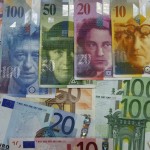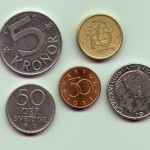Gold prices were grinding lower during early trade in Europe today, as investors await ECB decisions on rates later today. Safe haven bids stemming from growing worries over the crisis in Ukraine boosted gold prices for the biggest daily rally in almost a month on Wednesday.
Gold futures for December delivery trade at $1 305.3 per troy ounce at 9:01 GMT on the COMEX in New York, down 0.22%. Prices ranged from $1 304.1 to $1 309.9 per troy ounce. The contract added 1.78% yesterday for a weekly net increase of about 1%.
“Gold has received support as geopolitics return to headlines,” Lv Jie, analyst at Cinda Futures Co., said for Bloomberg. “In the longer term, as U.S. and European economies diverge, it will further strengthen the dollar against the euro, which is bearish for gold.”
Silver for September settlement was up 0.02% at $20.028 per troy ounce, while palladium had added 0.81% at $855.80. October platinum was up 0.22% at $1 468.45.
ECB policy
The European Central Bank (ECB) holds its monthly meeting today, to decide on monetary policy. On the table are the benchmark interest rate, currently at 0.15%, and the central bank deposit rate, currently at -0.10%. A negative deposit rate means that the ECB charges commercial banks for keeping their money in deposit, and is a policy measure aimed at spurring lending, and liven overall economic activities. Economists and analysts surveyed by Bloomberg forecast that the ECB will hold its refinancing rate at 0.15% and maintain its negative deposit rate.
A more dovish stance by the ECB in the speeches after the decisions are announced could feature a suggestion of rate drop or an introduction of quantitative easing, similar to the one of the US Fed. Indications of such measures would pressure the euro lower, and the euro has a very strong opposite correlation with the US dollar, meaning a weakness for the euro translates into strengthening for the dollar, which pressures the dollar-denominated gold.
The ECB meeting comes amid worsening economic figures for the Eurozone. Earlier today Germany reported contracting industrial production, after a surprise drop in factory orders was logged yesterday. Italy was reported back into recession, while services sector readings for the Bloc fell below expectations. Just last week the Eurozone reported declining CPI, which was logged at 0.4%, well below ECBs 2.0% target.
Last week the US central bank, the Federal Reserve, held its policy meeting, deciding to keep on track with reducing monthly government spending on stimulus, while maintaining the 0.25% base interest rate. The US economy is widely seen as recovering well, in contrast to the EU, driving a stronger dollar, which pressures gold.
The US will post jobless claims today. Initial applications for unemployment benefits for the week through August 2 are expected to be logged at 304 000, little changed since last week, when a significant monthly decrease in jobs creation was recorded, alongside growing unemployment.
Dollar, SPDR
The US Dollar Index, which measures the strength of the greenback, dropped 0.12% yesterday, but clawed back 0.10% today, to stand at 81.57 by 8:55 GMT. The gauge reached a nine-month high yesterday. Meanwhile, US stocks were little changed yesterday, with all major indices closing within a 0.08% margin of the previous close.
Elsewhere, assets at the SPDR Gold Trust, the largest exchange-traded gold-backed fund, dropped 2 tons on Wednesday to stand at 797.65 tons, the lowest level in more than a month.
Ukraine
NATO supported remarks made by Radoslaw Sikorski, Polish Foreign Minister, saying that Russia has amassed more than 20 000 combat-ready troops near the border with Ukraine. Moscow claims there will be exercises taking place there, though it is widely seen as a show of force, coming at a time when the Ukrainian military score advances against the pro-Russian separatists.
Heavy fighting was reported in Donetsk, a rebel bastion, while earlier on Wednesday two civilians were reported killed in Luhansk, the other major separatist stronghold, the BBC reported.
Meanwhile, Russian President Vladimir Putin ordered the government to draft a list of US and EU food imports, valued at some $3 billion per year, to be curbed or outright banned. The move is a retaliation against intensifying sanctions by the West, which just last week limited exports to Russia in the fields of energy, defense, high-tech as well as limiting Russian banks’ access to Western capital markets.
“We think that for gold prices to really move higher, the complex will need to see current political tensions translate into economic dislocations that could conceivably impact the global economy,” INTL FCStone analyst Edward Meir said for Reuters. “Judging the recent Russian actions, we very well may be heading towards that direction at a much more rapid clip than was the case several weeks ago.”
Technical support and resistance levels
According to Binary Tribune’s daily analysis, gold December future’s central pivot point on the COMEX stands at $1 302.6. In case futures manage to breach the first resistance level at $1 316.6, the contract will probably continue up to test $1 325.1. In case the second key resistance is broken, the precious metal will likely attempt to advance to $1 339.1.
If the contract manages to breach the first key support at $1 294.1, it will probably continue to slide and test $1 280.1. With this second key support broken, the movement to the downside may extend to $1 271.6.





